Cynthia moth or Tree of Heaven silkmoth
Samia cynthia
This moth is native to China, where its caterpillars feed on the Tree of Heaven, Ailanthus altissima, and its cocoons are gathered for wild silk. It was introduced into parts of Europe and North America, along with its host plant, in an attempt to raise it as a silk crop. The moths have naturalized in many parts of the world, although local wild populations in the US have become scarce. They are very closely related to Samia ricini, the Eri silkworm. There is debate as to whether they are two discrete species, or if ricini is merely a cultivar.

As with the Polyphemus moths, I started with Cynthia moths by acquiring cocoons. The cocoons seem very small and light for the size of the moths that will emerge from them.
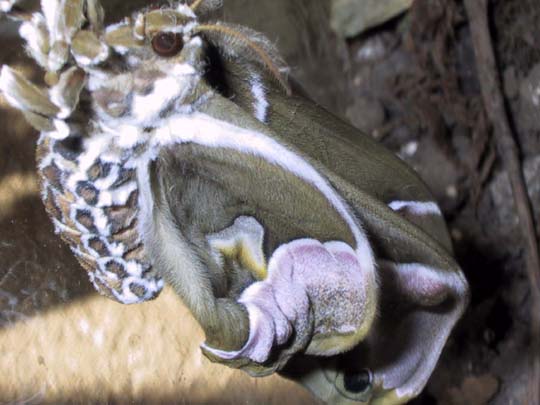
On May 31, the cocoons began hatching out. The first one was a male, and he flew vigorously around the hatching cage. They're much more energetic than the other Saturniid moths I've handled! This is the second moth, freshly emerged from her cocoon and still soft. She will hang upside down to air her wings, and begin scenting at nightfall to attract a mate. June 2, 2004.
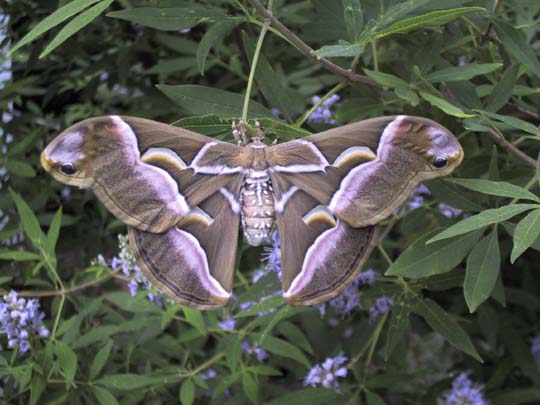
This is what she looks like once she's finished firming up her wings.

These are just a few "beauty shots" to showcase the amazing colors and textures of this moth.
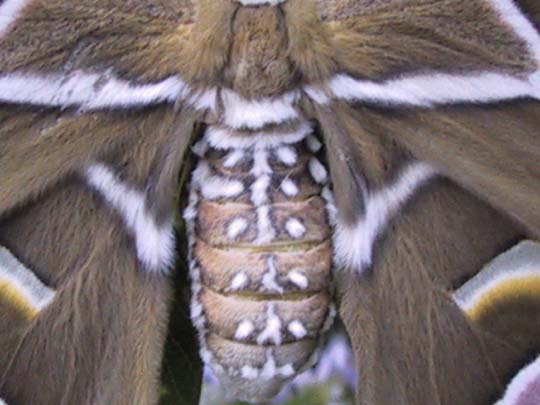
I love how furry they are! The markings along the body are actually little tufts of white fur. If you look between the furry parts, you can see her abdomen is literally bulging with eggs.
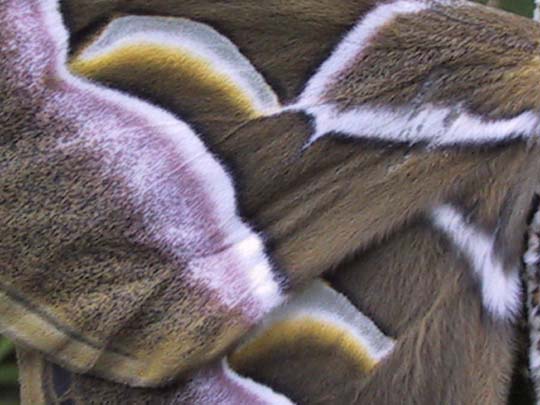
This is the forewing overlapping the hindwing.
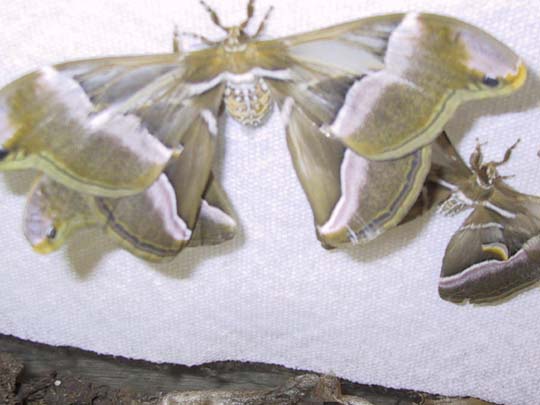
After several amusing failures, the female was finally mated. You can see that the scales on her wings are worn away in spots; this is from picking her up in attempts to hand-pair her with the male on the right. He was totally uninterested. Finally, a new male hatched, and mated with her his first evening; you can see him flattened under her left wings, with one leg sticking up beside hers. June 4, 2004.
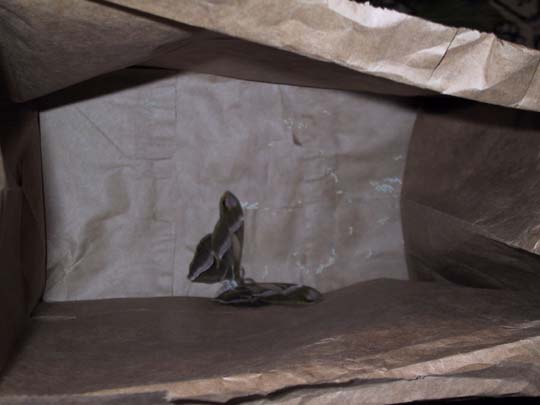
The moths paired up overnight, stayed together all the next day, and unpaired that evening. After they separated, I put the female into a paper bag to lay her eggs.
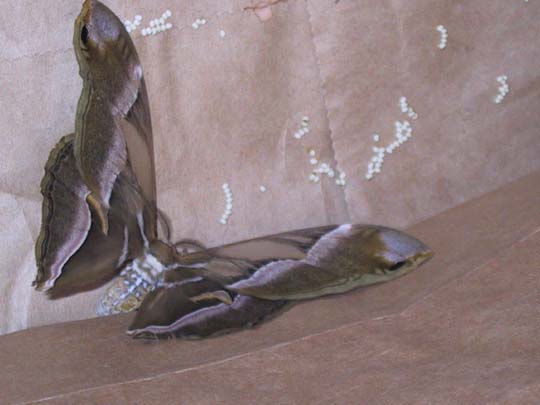
Here, you can see the moth in the bag, with the little clusters of eggs she's laid. I will leave her in here at least one more night, in case she has some more to lay. Then, I'll cut up the paper and place the eggs in a rearing container. June 6, 2004.
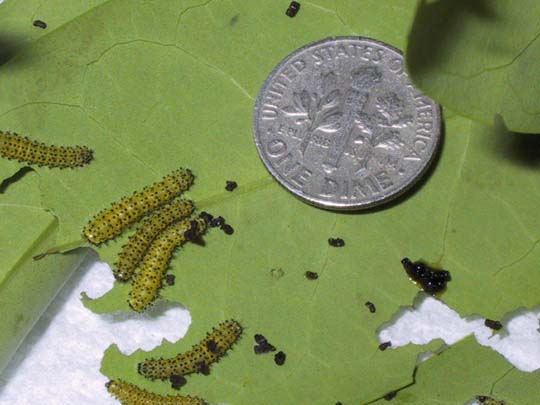
I missed getting a picture of these little guys hatching. This is the second instar. They are essentially identical to the Eri silkmoth for most of their life cycle; the cocoon and the moth look different, and the caterpillars are slightly differently colored, but the general gist is the same. June 27, 2004.
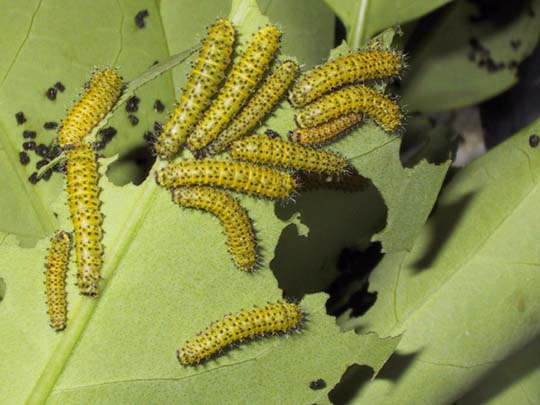
These caterpillars are very particular about staying together in tight clumps. June 27, 2004.
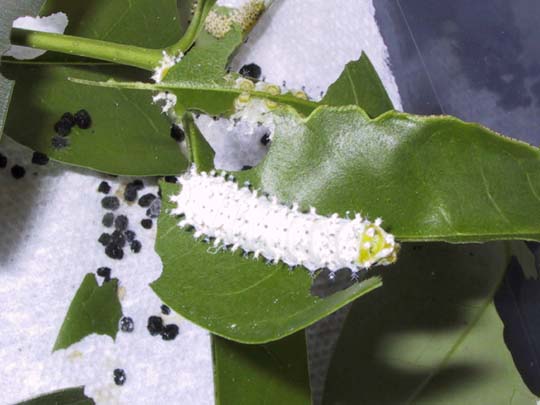
Once they shift into the third instar, they lose the yellowish coloring, and become much more white. I had some problems with disease in this batch. They began to drop off, one by one, and finally all were dead. I've found a source for their native food plant, Ailanthus altissima, and I'll try rearing them again next year on that.
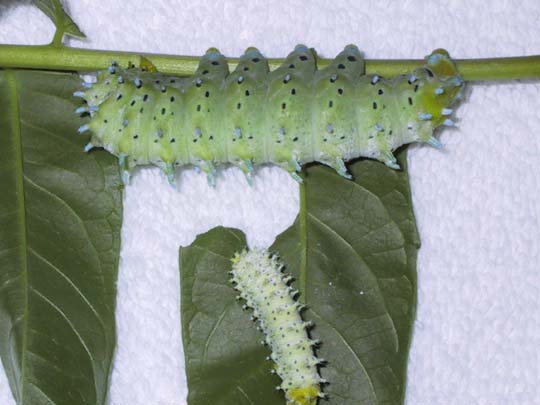
This is from the following year. The larva below is in the fourth instar; the larva above is fifth instar. They did much better with the ailanthus!
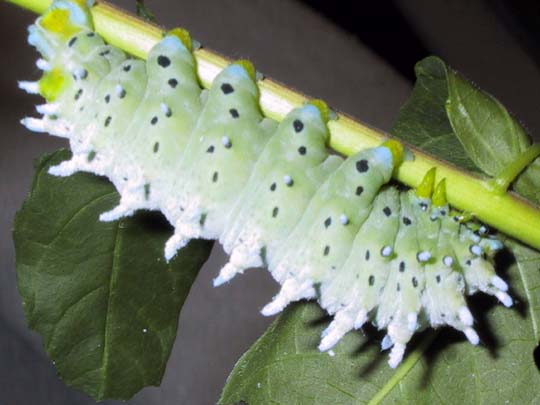
The fifth-instar larva has beautiful blue-green coloring with blue dots on its prolegs. These spun up into tight small cocoons like those shown at the top of the page, and the cycle will continue in the next spring. Cynthia moths only have one brood per season.